







Their global warming potential (GWP) is 298 times higher than that of carbon dioxide, CO2) (IPCC, 2014). N2O emitted from wastewater treatment plants (WWTPs) is mainly produced during the biological conversion of nitrogen into nitrogen gas (N2) through the nitrification and denitrification processes (Kampschreur et al., 2009). During nitrification, ammonium (NH4+) is oxidised to nitrite (NO2-) by ammonia oxidizing bacteria (AOB) and then to nitrate (NO3-) by nitrite oxidizing bacteria (NOB) under aerobic conditions. Though N2O is not an intermediate of this process, it can be produced as an end product by AOB via two metabolic pathways: (i) hydroxylamine oxidation (Law et al., 2012) and (ii) nitrifier denitrification (Wunderlin et al., 2012). The activation of these pathways by AOB is influenced by several factors such as NH-4 dissolved oxygen (DO) concentration, NO2- accumulation, and transient conditions from low activity to high activity (Law et al., 2012, Yu et al., 2010). During denitrification, heterotrophic bacteria reduce NO3- to nitrogen gas (N2) under anoxic conditions with NO2-, nitric oxide (NO), and N2O as intermediates. There are several factors affecting the accumulation of N2O during denitrification such as the limiting organic matter present in the wastewater, and the presence of DO and free nitrous acid (FNA, the protonated species of NO2-) (Law et al., 2012). The different N2O formation pathways are shown in the following figure.
Related documentation:
Methane (CH4) has a GWP 21 times higher than that of CO2 (IPCC, 2014) and is the second most important GHG after CO2. WWTPs emit methane. CH4 can be present in the influent of a WWTP in a dissolved form after forming under the anaerobic environments present in the sewer network (Gutierrez et al., 2014). In addition, significant dissolved CH4 concentrations are found in the reject wastewater stream originating from the anaerobic digesters which is normally recirculated to the inlet of the WWTP (Rodriguez-Caballero et al., 2014). Part of this CH4 can be biologically oxidised in the bioreactor but some is stripped to the atmosphere in the aerated compartments. Despite this, only a few studies have quantified CH4 emission dynamics in domestic wastewater treatment systems (Daelman et al., 2013, 2012; Rodriguez-Caballero et al., 2014).
Project title: Resilience of urban wastewater systems to emerging challenges: from fundamental understanding to improved management practices.
Acronym: REACH
Reference: CTM2015-66892-R
Project duration: 36 MESES
Funding organism: MINISTERIO DE ECONOMÍA Y COMPETITIVIDAD
Program: RETOS DE LA SOCIEDAD, MODALIDAD 1, PROYECTOS I+D+i Bases
Reguladoras: Orden ECC/1780/2013, de 30 de septiembre (publicado en BOE 236 el miércoles, 02 de octubre de 2013
Project leaders:
Urban wastewater systems (UWS) have the functions of collecting, transport (sewer systems), store (storm water tanks) and treat (wastewater treatment plants, WWTP) the urban wastewater and the stormwater before discharging to the receiving water bodies (river, lake, sea). UWS have been traditionally managed independently and without proper understanding the interdependencies amongst their elements, leading to suboptimal performance. The integrated management of UWS presents big challenges, but also great opportunities to decrease total management costs and environmental impacts and increase overall system performance.
Within this context, the main objective of the REaCH project is to increase the knowledge about greenhouse gas emissions in sewer systems, wastewater treatment plants and rivers in order to identify best management strategies. More specifically, this project aims at monitoring N2O and CH4 emissions in the entire system (also including the emissions from rivers).
The project methodology involves experimental work in the lab under controlled conditions (using a singular pilot plant mimicking a sewer, a WWTP and a river) to assess the generation of N2O, CH4 emissions, and experimental work at full-scale to verify the finding from the lab experiments. The resilience of the pilot plant to two environmental stressors (seasonal variability and storms) will be investigated by changing the temperature and manipulating the hydraulic retention time of the system combined with simulated mix of raw wastewater with rainwater. State-of-the art models will be used to support the findings from the lab experiments. Moreover, Life Cycle Assessment (LCA) will be applied to the evaluated strategies in order to identify the trade-offs between direct emissions to water, soil and atmosphere and indirect emissions from the production of energy and chemicals used in the process.
REaCH will contribute to better understanding the relationships between the UWS elements. In addition, the project will enhance the development of current UWS mathematical models and will propose solutions that facilitate the application of LCA in UWS. REaCH will also create two simple Decision Support Systems: First, a framework based on the principles of Life Cycle Assessment using a standard platform (Excel) and combined with advanced programming. Second, a web-based Guide to integrated management of UWS GHG emissions (REaCHGuide). REaCHGuide will be a user-friendly web-based tool for use by decision makers and technical personnel in the public and private sectors, to learn and get trained about GHG monitoring and mitigation. Examples include protocols for monitoring N2O and CH4 emissions, for the selection of best integrated management practices. The project will be undertaken by a research team with proven experience on the monitoring, control and optimization of the different parts of UWS and with a strong track record delivering high quality research, with state of the art infrastructure support from the host organisation.
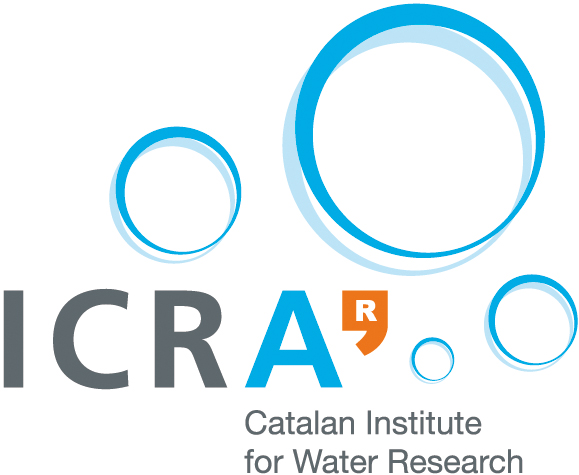
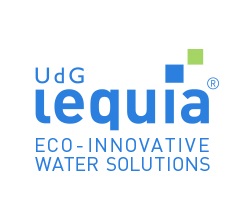

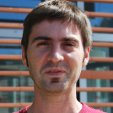
Dr. Lluís Corominas is a research scientist responsible of a research group at ICRA on Integrated Management of Urban Water Systems and Sustainability Assessment. It involves the development of new monitoring tools, models for water quality prediction and methods for incorporating sustainability into decision-making. He has experience in leading national and international EU projects that involve fundamental and applied research, with more than 50 peer-reviewed journal papers. Participant in 3 IWA Task Groups (GHG on greenhouse gases emissions, GMP on good modelling practices, BSM on benchmarking wastewater treatment), and editor of the journal Water Practice and Technology from IWA Publishing since 2014. Principal inventor of a patent and enterpreneur, co-creator of InnoWatt spin-off. Dr. Corominas chairs the IWA Working Group on Life Cycle Assessment of Water and Wastewater Treatment, and is leading the initiative of delivering a roadmap for LCA studies applied to wastewater treatment. ORCID: https://orcid.org/0000-0002-5050-2389.

Maite received her PhD in Environmental Engineering at the University Autonomous of Barcelona in 2004.
After its completion she moved to the University of Queensland (Australia) to take a postdoctoral research position at the Advanced Water Management Centre (AWMC).
During her postdoctoral career she focused her research in aerobic granulation for the treatment of wastewater and nutrient removal optimization in conventional systems.
In 2010, she joined ICRA with a Ramon y Cajal Research fellowship.
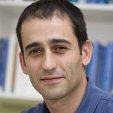
PhD in Civil and Environmental Engineering from the University of Girona.
Leads the research line in sewer systems at the Catalan Institute for Water Research.
Adjunct Research Fellow of the Advanced Water Management Centre (AWMC), the University of Queensland (Australia). 2005 joined the AWMC as Research Fellow in the frame of the Australian Research Council project “Understanding the Biotransformation Processes in a Sewer System to Achieve Optimal Management (LP0454182)”. January 2008 became Subproject 6 Leader for the SCORe (Sewer Corrosion & Odour Research) ARC LP0454182
Principal Investigator of the Marie Curie project SGHGEMS “Sulfide and Greenhouse Gas emissions from Mediterranean sewers” (PIRG08-GA-2010-277050) funded by the EU.

Prof. Manel Poch graduated in Environmental Chemistry at the Universitat Autònoma de Barcelona (UAB) in 1979 and got his PhD in sciences at the Universitat Autònoma de Barcelona (UAB) in 1983 under the title “Modelització de la qualitat de l’aigua del riu Llobregat”. He is professor at the Laboratory of Chemical and Environmental Engineering from Universitat de Girona (Spain). He was awarded with the 6th so-called “sexenio” (the maximum number to be attained) recognising his research efforts over his professional career as a university professor. Prof. Poch research has evolved from the mathematical modelling of biotechnological and environmental processes, to the development of environmental decision support systems (EDSS), particularly those related to the urban water cycle and evaluated from an integrated point of view (sewer system, waste-water treatment plant and river). He is also active in projects related to the selection and maintenance of new waste-water treatment systems. He has published about 100 publications in internationals journals with peer review, H-index=26 and supervised 25 PhD. Prof Poch was founding partner in Sisltech, a spin-off which markets a supervision system for wastewater treatment plants, that implemented its software ATL at different locations throughout Europe and America. He is co-author of a divulgation book on application of decision support systems to water management that can be found at the web of his research group http://lequia.udg.es/. In the period 2009-2012 he joined Catalan Institute for Water Research Water (ICRA team) as senior researcher and group leader of Technologies and Evaluation Area.
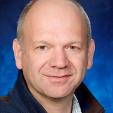
Titular de la Cátedra de investigación del Canadá en Modelización de la Calidad del Agua (modelEAU) y Profesor del Departamento de Ingenieria Civil y de Ingenieria de las Aguas, Université Laval, Quebec, Canadá (CA)
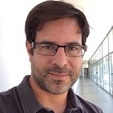
Jose Porro is founder of Cobalt Water LLC and Cobalt Water EU BVBA , and brings more than 18 years' experience working with drinking water and wastewater utilities for planning, modeling, design, and applied research. He has worked on projects in the U.S., Latin America, Europe, Middle East, and Asia.

Dr. Juan A. Baeza is Associate Professor at Universitat Autònoma de Barcelona since December 2004. He is a researcher in Environmental Engineering since 1994. Dr. Baeza is in charge of the research line on nutrient removal from urban wastewater in the "GENOCOV group on biological treatment of liquid and gas effluents" of the Universitat Autònoma de Barcelona. This group has 25 members and it is recognized as Quality Research Group by the Catalan Government. He’s currently teaching courses at UAB in Chemical Engineering: Simulation and optimization of chemical processes, Control and instrumentation for chemical processes, Advanced control, Applied chemical kinetics, Engineering of biotechnological processes, Computer applications for chemical engineering.

Albert Guisasola and Canudas (Mataro, 1978) is a Chemical Engineer (UAB, 2001) and PhD in Environmental Sciences (UAB, 2005) with the thesis entitled "Modelling biological organic matter and nutrient removal from wastewater using Respirometric and titrimetric techniques" which receivedUAB PhD honors. After a postdoctoral stage at University of Queensland (Australia, 2006/2007) and University of Girona (2007), he is nowadays a lecturer in the Departament d'Enginyeria Quimica at UAB since 2007.